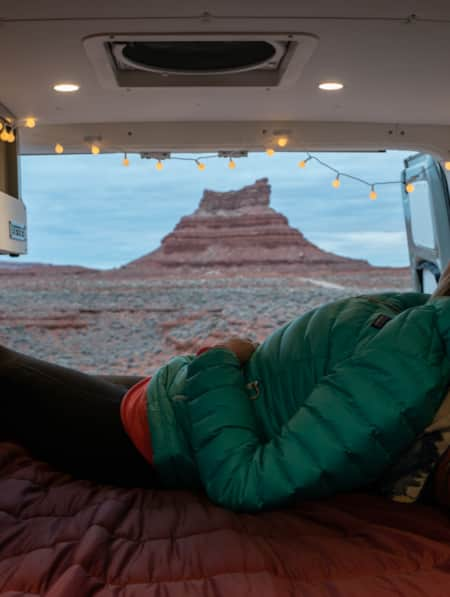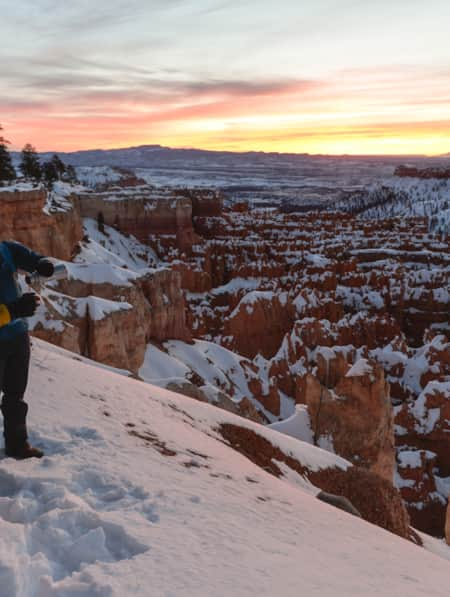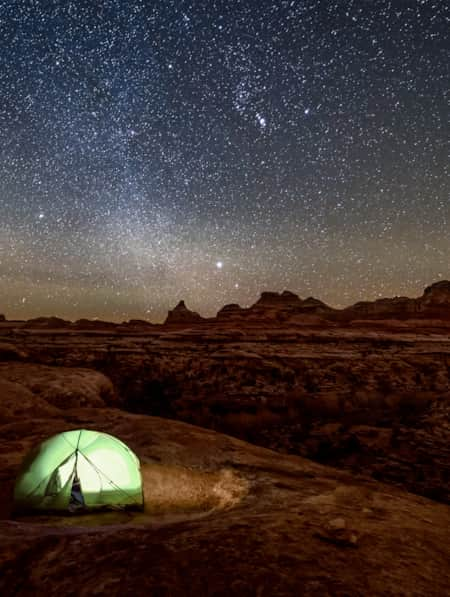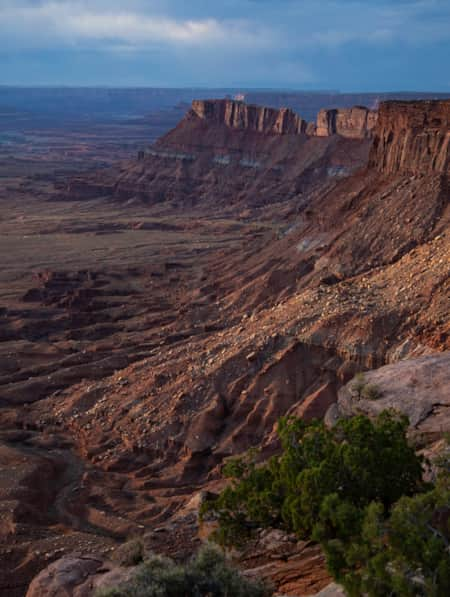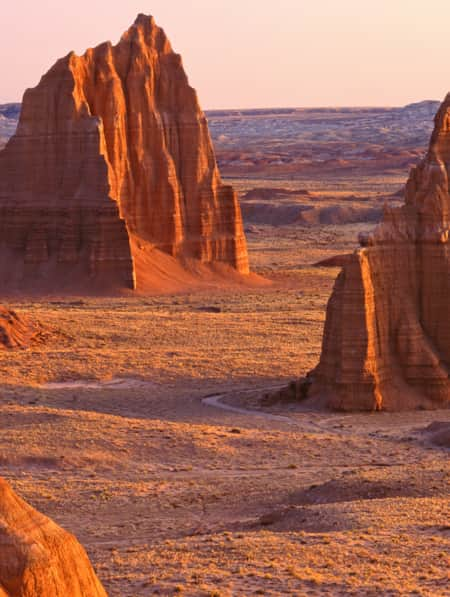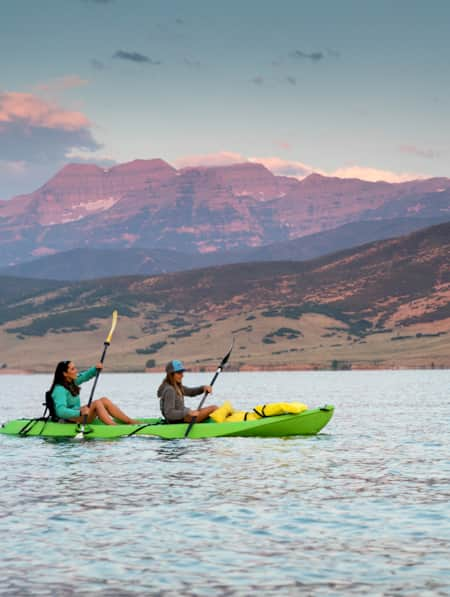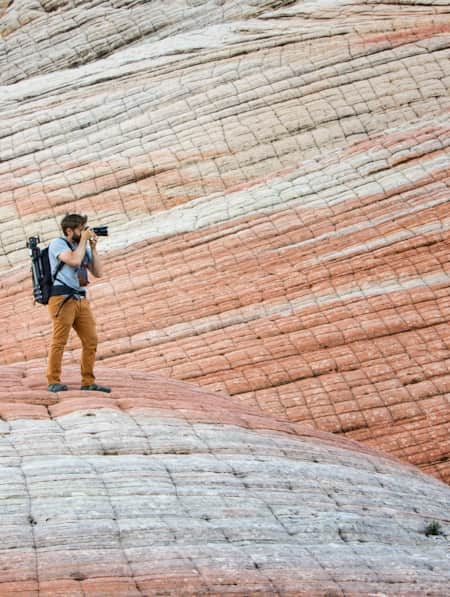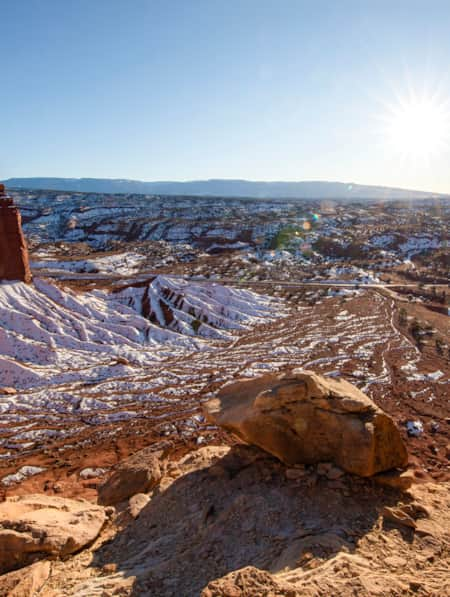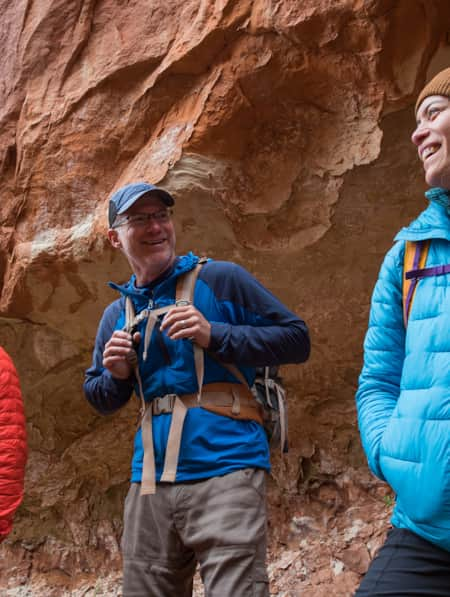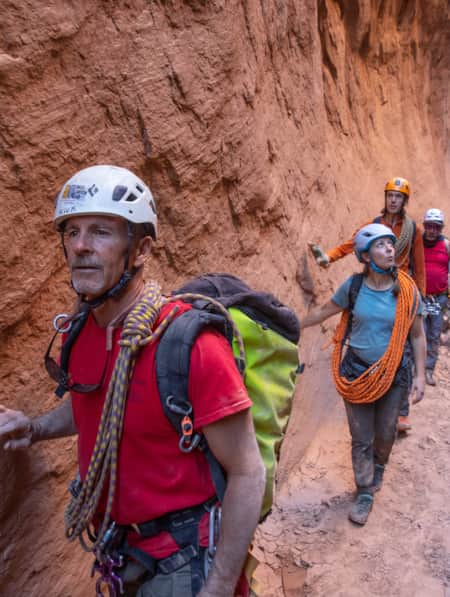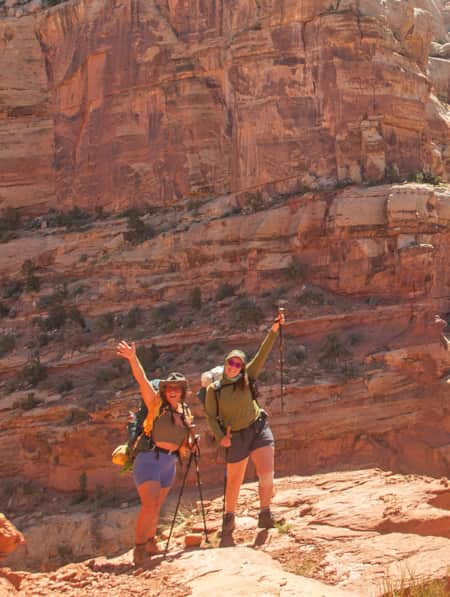5 Expert Tips to Prepare for Your Utah National Parks Adventure
Headed off to one of Utah’s National Parks for vacation? Maybe you have the whole The Mighty Five in your sights? Here's some expert advice on how to prepare.

Here's five tips to help you prepare, courtesy of Aly Baltrus, the former chief of interpretation and visitor services at Zion National Park.

Always be sure to stop by a park's visitor center to learn about trail closures, water availability or any timely alerts.
Photo: Andrew Burr
1. Pack the Essentials
We’re human; we forget things. For your trip to any of The Mighty Five, some things are more essential than others. Visitors are advised to carry a lot of water — at least one gallon per person per day. In Zion, there are several water refilling stations, so you don’t have to carry in absolutely everything you’re going to drink during your stay unless you have a permit for more remote areas. Arches National Park near Moab has water at the visitor center near the entrance and at the Devils Garden Campground. There's a water bottle filling station in the visitor center of Bryce Canyon National Park. In other areas of the national parks in Utah, water is significantly more scarce, particularly in Canyonlands National Park. If there are any concerns, check at the visitor center to learn about water availability and always plan ahead. Many travelers carry water coolers or extra jugs of water in their cars to fill up before a hike.
“Good hiking shoes are important,” says Baltrus. That doesn’t mean you have to buy the most expensive brand. Make sure they fit you and you’ve used them before taking long hiking trips. Flip-flops are not appropriate footwear for the vast majority of trails in the national parks. Similarly, budget tools can help you in the outdoors, according to Baltrus. “If folks are hiking into the Narrows,” she says, “simple locking plastic bags can be helpful to keep your snacks and cell phone dry.”
And remember to follow Leave No Trace principles — plan to pack out everything you pack in (garbage, etc.) and have a plan for when nature inevitably calls (Read: How to Poop in the Outdoors). See Planning Ahead for Your Utah Adventure for some additional packing tips.

Before starting down any trail, be sure to research its length, difficulty and uncommon features to ensure you're prepared.
Photo: Andrew Burr
2. Know the Terrain
Being prepared isn’t exclusive to the things you can wear or bring along in your pack. Sometimes, it requires understanding what’s required in certain weather conditions. “If you are from lower elevations, take your time when hiking,” says Baltrus. “It is much harder to hike in higher elevations. If you are around for a few days, ease yourself into hiking by starting with easier hikes.” (For example, Bryce Canyon reaches up to over 9,000 feet of elevation). Baltrus's special expertise in Zion helps visitors understand the unique qualities of the park. “There is very little shade in Zion,” she says. “Sunscreen, hats, plenty of water and some salty snacks are a must, when you’re packing for a trip there.” The same rules apply to most hikes throughout The Mighty 5. While several hikes are "family friendly," these wonders are significantly more enjoyable if everyone knows what to expect and comes prepared.

It’s exciting to be in the outdoors, and everyone should consider going at their own pace.
Photo: Andrew Burr
3. Go at Your Own Pace
It’s exciting to be in the outdoors, and everyone should consider going at their own pace. If you have very little hiking experience, you don’t want to start out with a 40-mile, hardcore backpacking trip. “Several of Zion's trails, including Angels Landing, Hidden Canyon and Observation Point, have steep climbs and drop-offs,” says Baltrus. “These are not the best trails for people who are afraid of heights or those who have heart issues.” If you’re traveling with friends or family, discuss your preferences and skillset before you head out on the trail. The park’s visitor center is an ideal place for this conversation, because skilled staff will be able to provide advice on trail conditions, skills needed and offer alternative trail options. What's more, rugged national parks like Capitol Reef and Canyonlands have several front country, family-friendly trails and experiences, they are equally known for their expansive backcountry — not a place you'll want to venture without good preparation, packing, wayfinding skills and a stop at the visitor center for current conditions.

Be sure to choose trails and routes that are within the skill level of all recreators in your group.
Photo: Andrew Burr
4. Know Your Companion's Limits
As with the above point, it helps to travel with people who won’t push you too far outside your comfort zone. Sure, a little challenge makes us feel good. But following a buddy’s plea to just do it his way this time may not end well. “Peer pressure is sometimes a problem when visitors are part of a bigger group,” says Baltrus. Friendships are important, but your well-being is even more so. Be honest and up-front about your hopes for the trip and your experience. That will encourage others to do so, as well, and you can address issues of conflict early, instead of on the trail.

Visitors who arrive during the early morning hours — especially on a weekday — can treat themselves to a quieter park experience.
Photo: Andrew Burr
5. How to Avoid the Crowds
Utah’s national parks can be a popular draw, which means deciding when to visit a park feature can be as important as deciding what to see in the first place. “In order to avoid the most crowds,” Baltrus advises, “come early in the morning or after 2 p.m.” And note that from April through October (between the hours of 7 a.m. and 4 p.m.), Arches National Park requires a timed entry ticket to enter the park. Many of Utah's best sights are especially spectacular at sunrise and sunset, during which some of the longer trails receive less traffic. But hikes of any distance at these times do require extra care. Add a headlamp or flashlight to your pack and be prepared for the possibility of cooler temperatures. In other cases, you'll be joining the crowd for a sunrise: Mesa Arch in Canyonlands National Park receives a lot of traffic around the sunrise hours because it's a very short hike, meaning photographers can easily haul in their gear and grab a truly iconic image at an easily accessible destination. The same goes for the Rim Trail of Bryce Canyon, which is easily accessible from the scenic drive and the perfect time to see the hoodoos play with the changing light. But visitor's should also note that there a number of dazzling Utah State Parks that are near to The Mighty 5, and they make for a good stop when the national parks are particularly busy.
On the other hand, take some time to get to know your fellow travelers and celebrate the vast, natural beauty together. You'll likely hear a number of different languages on Zion National Park's multi-passenger shuttle and in popular places to cool off in the peak season of summer, like in the Virgin River at the Mouth of the Narrows. Elements took eons to create the varied wonders of Utah's national parks. Visitors who rush through will only get a small taste of the power of these places. Visitors who plan extra time at each park will enjoy a less hurried, more intimate stay. Learn more about how to visit Zion National Park. The ideas here apply to all of Utah's incredible natural sanctuaries. Generally, "people should plan to be as self-sufficient as possible,” says Baltrus. “Be prepared, don’t take additional risks, and practice good trail etiquette."

Road biking is a wonderful option for adventurers to Utah's national parks and monuments.
Photo: Nushin Huq
Bonus: Road Biking in Utah's National Parks
For those who would rather see some of Utah’s most spectacular national parks and monuments from the seat of a bicycle rather than out the window of a vehicle, road biking is a wonderful option. Admittance to parks is usually cheaper for cyclists, and being able to feel the wind on your face as you pedal through a park is a great way to ensure an intimate experience with the outdoors. Learn more.
Check out our trip planner guide to start plotting your next fun overnight or week-long excursion!

State Parks Near The Mighty 5
Utah’s natural beauty extends well beyond the borders of the Mighty 5. Visit some of the best state parks in Southern Utah.

